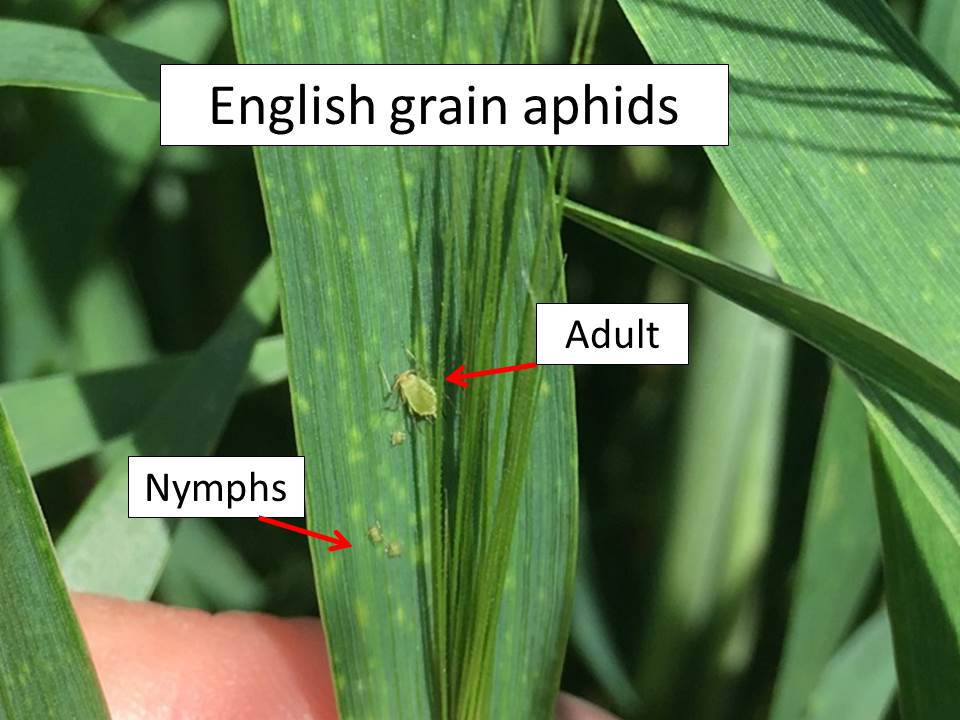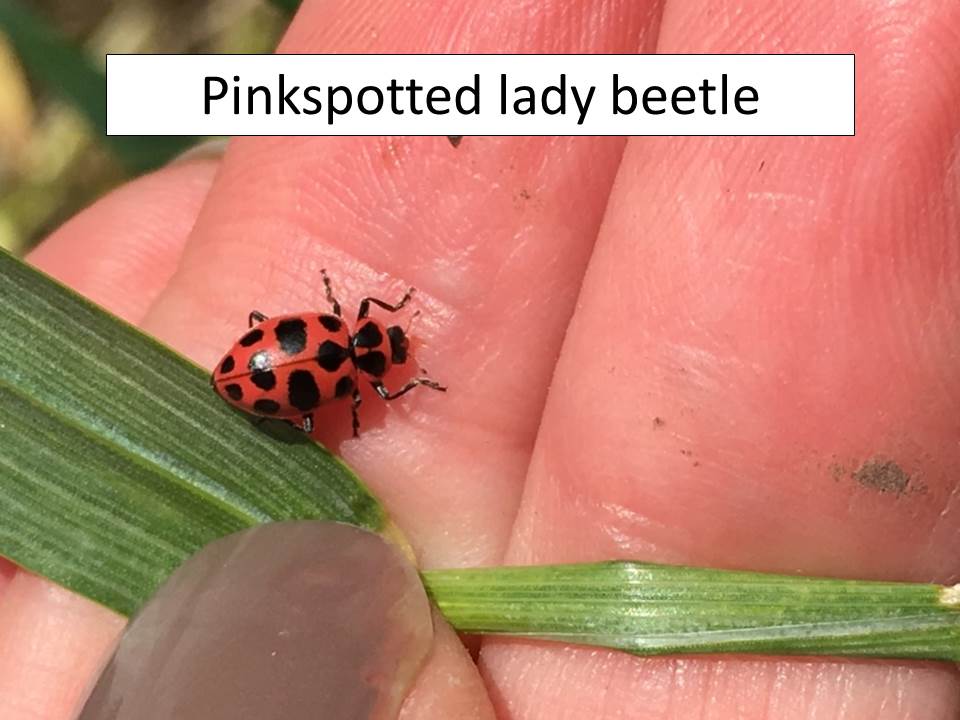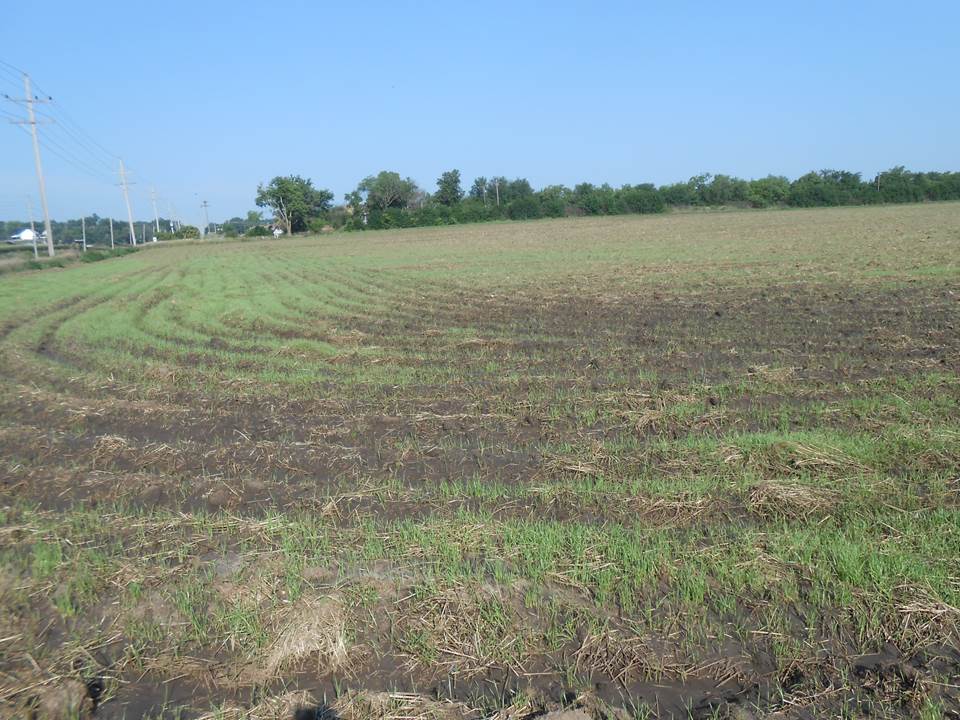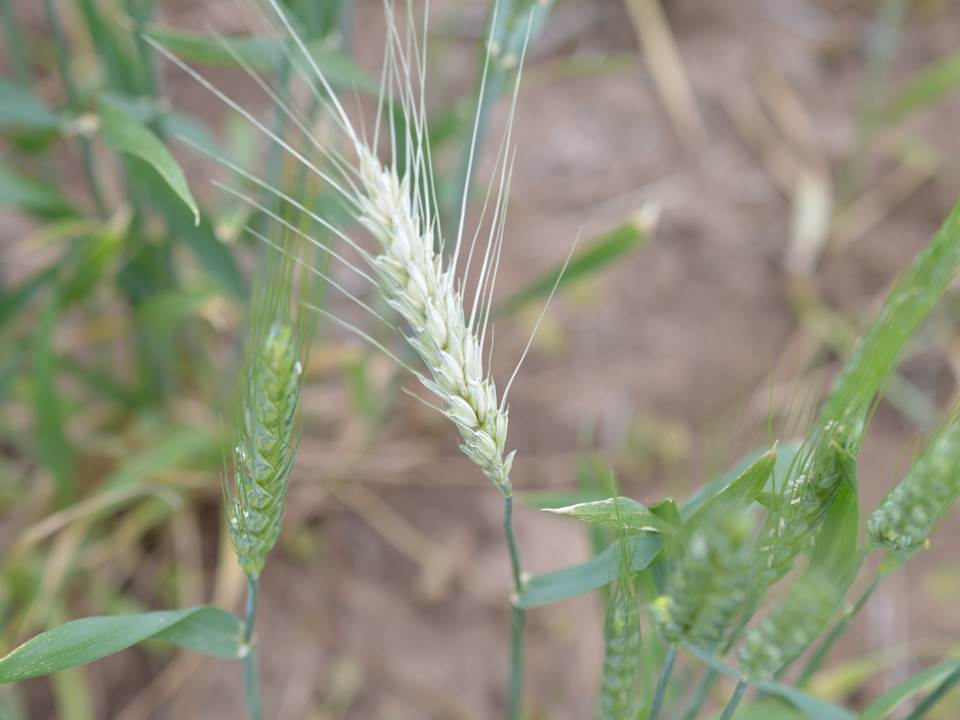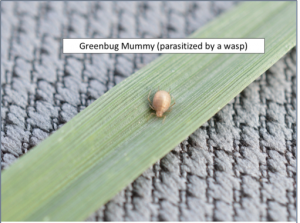–by Dr. Jeff Whitworth and Dr. Holly Schwarting
Wheat aphids have really started showing up in wheat fields throughout north central Kansas. English grain and bird cherry-oat aphids are the two most commonly observed so far.
These aphids usually do not build up in sufficient populations to stress wheat or impact yield, especially when growing conditions are good, which they have been for the last couple of weeks. These aphids can vector barley yellow dwarf virus, however at this time of year this should not impact yield. These aphids are providing a plentiful food source for lady beetles, and all wheat fields sampled in the last seven days contained significant numbers of lady beetles.
Therefore, it is prudent not to spray for these wheat aphids unless there are 20+/tiller on a field-wide basis. Especially do not include an insecticide in a mixture with a fungicide “just in case”.

